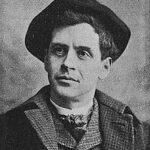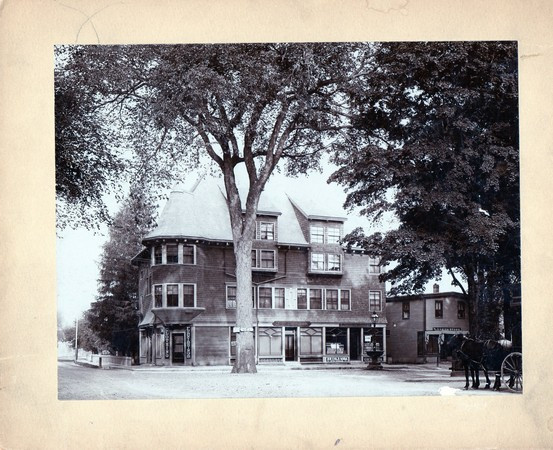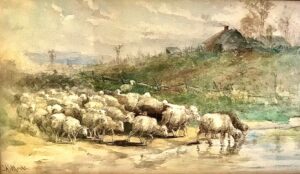May 1, 2024

Although Monks was born in 1850 in Cold Spring, NY, he became closely connected with Medfield when in 1877 he married Olive B. Young, the granddaughter of Elijah Thayer who bought the land and buildings in the center of town in 1864. Thus, Monks took his place alongside Medfield’s two other celebrated artists of the nineteenth century, Cass and Inness. Monks became a lifelong friend and student of Inness. For this year’s exhibit we uncovered some fascinating tidbits to accompany the artwork, such as a rare book by Monks from the 1920s, How Etchings Are Made; contemporaneous reviews of Monks’ artwork from art critics of the time; an original letter accepting Monks into the New York Etching Club, and a photo-journalistic exhibit of the changing history of “Monks Block,” the familiar brown late-Victorian building in Medfield Center, at the corner of Main and North Streets. When we see a building every day, it is easy to overlook its architectural charm and history. This unusual building has a storied history that visitors could learn about.

“The beautiful village of Medfield, with its long avenues umbraged by those gigantesque bouquets of grace and grandeur which we nickname elms, and with its lanes of golden-green maples, has proved an Eve to many an artistic Adam, and tempted him to eat of that fruit of knowledge whose taste is the taste of Beauty; but neither Cass nor Inness fully devoted himself to the study of Medfield scenery as did John Monks.”

“He has a sketching-cart fitted up with curtained windows, a kerosene stove, easel and all needful things, and has this driven into the depths of the forest, or anchored in the marshes, by some villager, so that he can spend whole days watching the eternal shift from light to shade, or painting Winter in his innermost lair.”
Monks’ artistic temperament may have been contagious in Medfield and may even have enhanced the town’s economy by unwittingly causing the local hat-makers to step up their game. Austin suggested that the straw hats manufactured in Medfield had become more attractive since Monks’ arrival in town.
“Since his (Monks’) advent into this town, it is curious to note the spread of the artistic spirit and desire for improvement; not of course attributable to him personally, but to the noble Art of which he is a modest acolyte. I was impressed with this in a practical way some six months ago, when the enterprising manager of the Medfield Straw Works, the largest I believe in the country, took pains to show me a book of new shapes and textures gotten up in ladies’ hats as compared with the factory’s out-put of the year before.”
Did John Austin Sands Monks inspire a renaissance in Medfield? We like to think he may have. There is no doubt that our town’s artistic spirit is as strong as ever.
Works Cited: Austin, Henry Willard. “Monks and His Work.” The Connoisseur, vol. 2, no. 1, 1887, pp.3–16. JSTOR, https://doi.org/10.2307/25581121. Accessed 21 Apr. 2024.